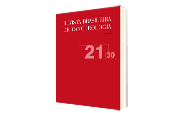The Genesis of Human Breast Cancer: Histological, Histochemical and Cariometric Studies: Proposition on the Genesis of Cancer
DOI:
https://doi.org/10.32635/2176-9745.RBC.1965v21n30.4094Palavras-chave:
Neoplasias da Mama/patologia, Neoplasias da Mama/epidemiologia, Neoplasias por Tipo Histológico, CarcinogêneseResumo
1. Câncer arises gradually, preceded by histological, histochemical and cariometric (tetraploidism) or hyperdiploidism pictures which may be called morphological precursors of câncer. 2. Malignant cells are not autonomous, but obbey the principal biological laws — genetic code of triplets, hormone dependence etc. Then, câncer cannot be considered a “sui generis”, mysterious disease. 3. Differences between normal and malignant cells are only quantitative. The most important feature in pre-malignant and malignant cells is the increase of DNA-RNA. All the other findings — enzymatics etc. — most be considered as secondary phenomena. 4. The increase of DNA-RNA in the cells of the morphological precursors of câncer — as stated by the author — has the meaning of a link between normal and malignant cells. 5. The increase of DNA-RNA explains all the morphological and functional changes observed in malignant cells, including accelerated growth, invasion, metastasis and death — malignant cells reaching the Interspaces-vessels and impairing vital functions either through the substitution of functional cells by immature outsider cells or by compression of important organs. 6. The cause of this DNA-RNA increase may be diversified; virus (integration of the DNA-RNA of the virus in the DNA-RNA of the cell), Chemical carcinogenic agent (inclusion of the molecule of the carcinogenic agent between the puric and pirimidic plaques of the DNA molecule), radiation (endoreduplication of the chromosoms). 7. Hormones act as a carcinocinetic agente (accelarating mitosis) in hormone dependent tumours and determining the appearance of the morphological precursora of câncer in hormone dependent tissues. 8. The growth of the malignant tissue — just a displacement of normal cells by malignant ones — depends of the amount of the DNA-RNA in the malignant cells and of the opposite force of the connective barrier. 9. Histological, histochemical and cariometric studies made by the author in cases of breast pathology lead to the conclusion that may be considered morphological precursors of breast câncer — apocrine hyperplasia, adenomatosis, papillomatosis and adenosis - which give rise to apocrine carcinoma, comedocarcinoma and papiilary carcinoma, initially intraductal or intracystic, i.e., in situ. Adenosis gives rise to directly invasive lobular carcinoma (scirrous type). Initiating invasion all the carcinomas in situ become scirrous carcinoma by diploid reduction, and acquire other patterns according to the connective barrier. If the connective is dense (possibly due to a high ratio of colloidal Iron) the carcinoma stay as scirrous or circumscribed. If there is a colloid degeneration of the stroma the carcinoma will be of gelatinous type. If the connective is loose or edematouç the carcinoma will appear as medullary or acute.
Downloads
Referências
DE OME, K. B.; NANDI, S.; BERN, H. A.; BLAIR, P.; PITELKA, D. — The Morphological Precursors of Câncer. Proc. Int. Conf. Un. of Perugia, 1961, pag. 349.
WILLIS, R. A. — Pathology of Tumours. London, Butterworths, Third Ed. 1960.
BERN, H. A.; DE OME K. B.; WELLIGS, R. S.; HARKNESS, D. R. — Câncer Res., 18: 1324, 1958.
BLAIR, P.; BLAIR, S. M.; GILLIES, D. R.and LI, C. R. — Câncer Res., 20: 1640, 1960.
ELIAS, J. J. and RIVERA, E. — Câncer Res., 19: 505, 1959.
Downloads
Publicado
Como Citar
Edição
Seção
Licença
Os direitos morais e intelectuais dos artigos pertencem aos respectivos autores, que concedem à RBC o direito de publicação.

Este trabalho está licenciado sob uma licença Creative Commons Attribution 4.0 International License.









